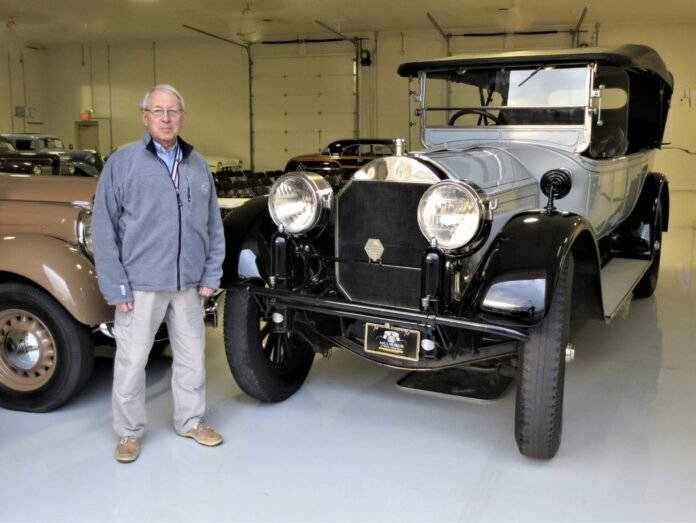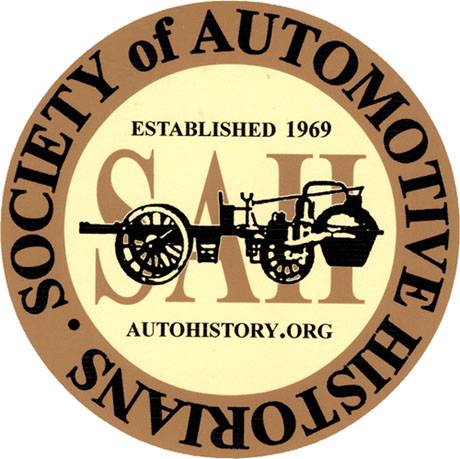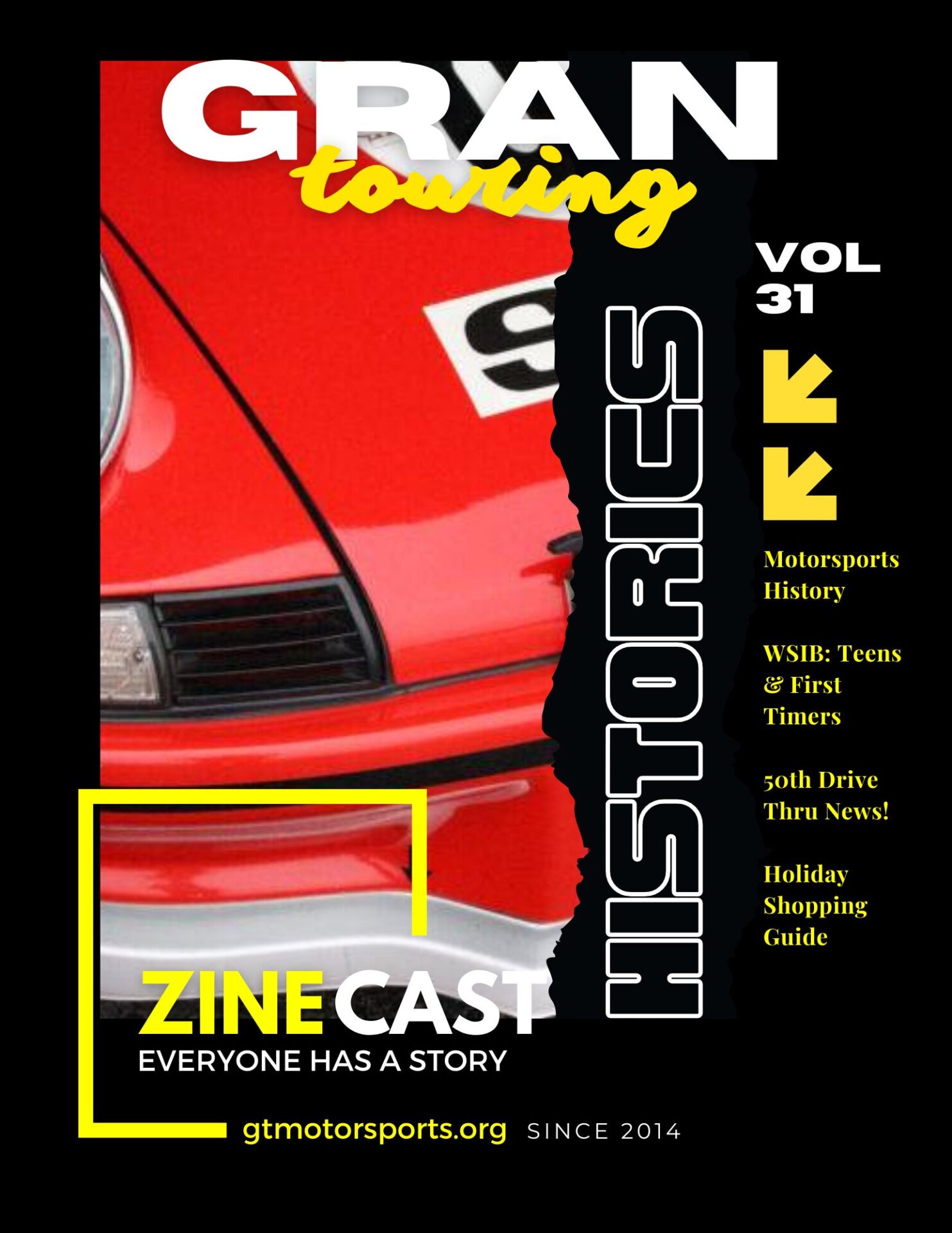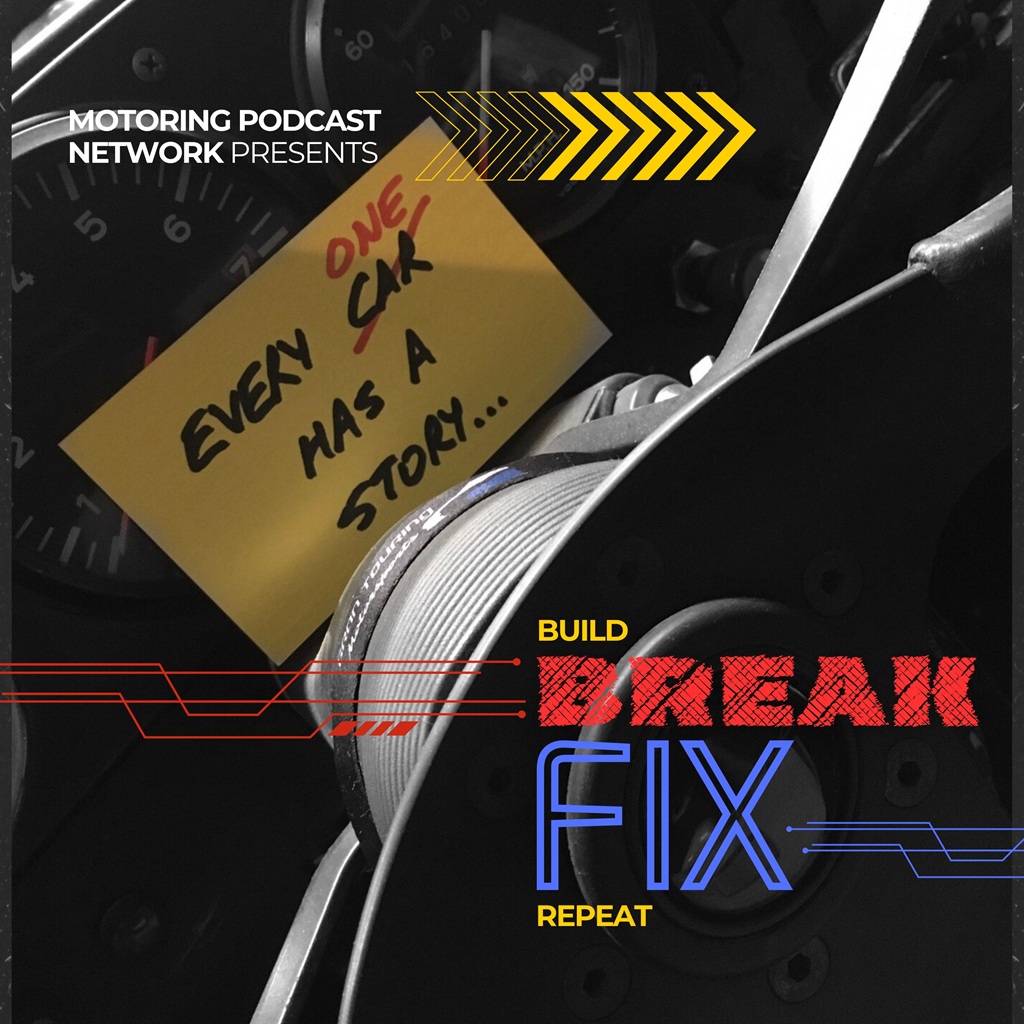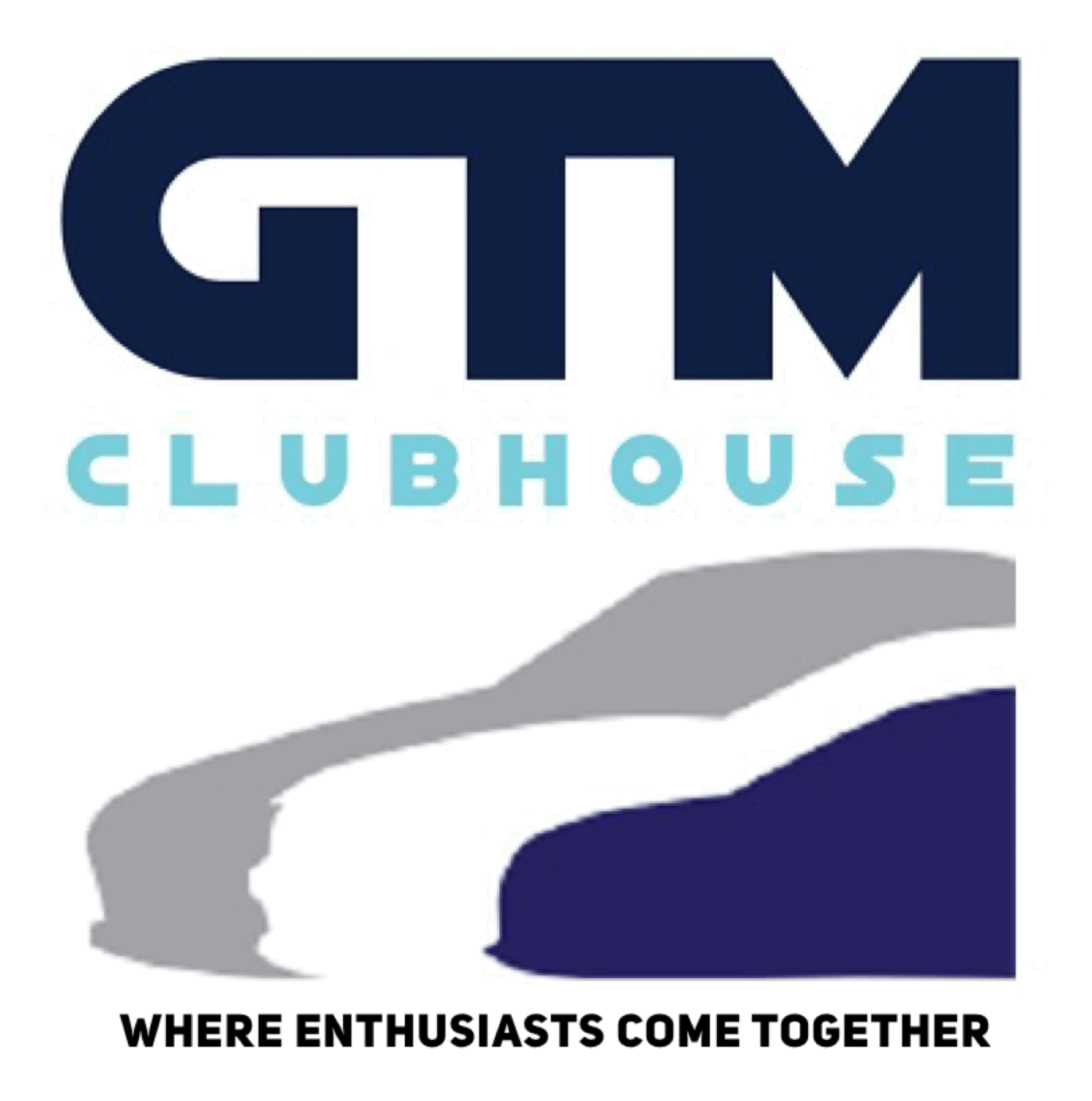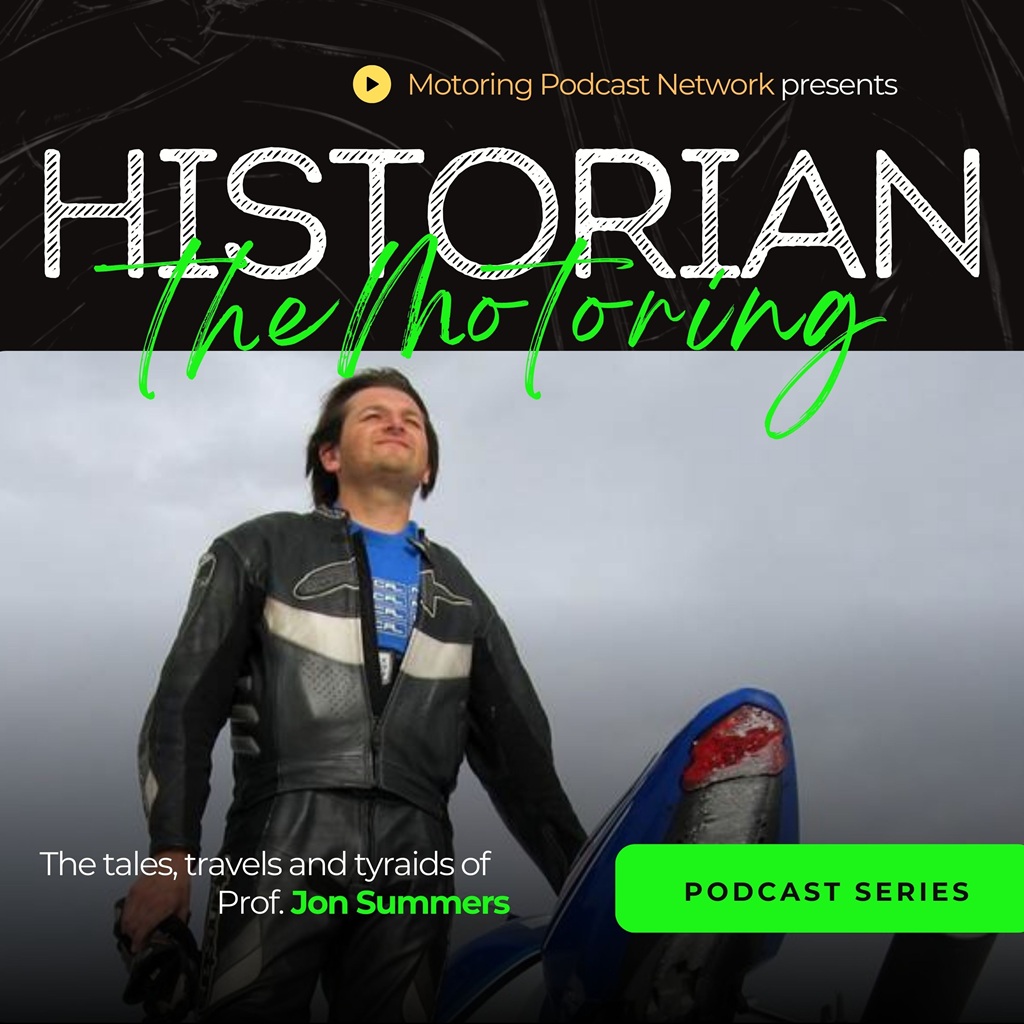Don Capps has been a member of the SAH Board of Directors since 2014 and is now the immediate past president of the Society. He is currently engaged in research surrounding the sport and contests sanctioned by the AAA from its beginning, including the American national auto racing championships, until the Contest Board ceased operations at the end of the 1955 season.
Tune in everywhere you stream, download or listen!
 |  |  |
- Bio
- Notes
- Transcript
- Livestream
- Learn More
Bio
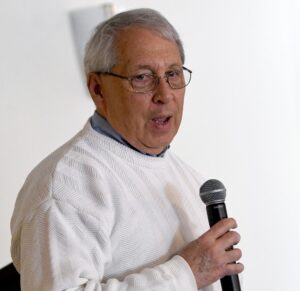
Don Capps has been a member of the SAH Board of Directors since 2014 and is now the immediate past president of the Society. He is a member of the Historians Council of the IMRRC and is the co-chair of the Symposium. Capps began following motor sports at an early age while attending races with his father at Lakewood Speedway in Atlanta. In addition to motor racing, military and civil aviation and military history have also been lifelong interests that formed early on. Capps holds graduate degrees from the University of South Carolina and George Mason University and has taught history at both the high school and college levels, the latter being The Citadel. He was a faculty member of the Defense Model & Simulation University and spent over three years in Southwest Asia with the Program Executive Office for Simulation Training and Instrumentation.
Notes
Transcript
[00:00:00] Brake Fix’s History of Motorsports series is brought to you in part by the International Motor Racing Research Center, as well as the Society of Automotive Historians, the Watkins Glen Area Chamber of Commerce, and the Argettsinger family. Things Change, 1908 and American Motorsport by Don Capps. Don Capps has been a member of the SAH Board of Directors since 2014 and is now the immediate past president of the society.
He is a member of the Historian’s Council of the IMRRC and is co chair of the symposium. Don began following motorsports at an early age while attending races with his father at Lakewood Speedway in Atlanta. In addition to motor racing, military and civil aviation, and military history have also been lifelong interests that formed early on.
Don holds graduate degrees from University of South Carolina and George Mason University and has taught at both the high school and college levels, the latter being the Citadel. He was a faculty member of the Defense Model and Simulation University and spent over three years in Southwest [00:01:00] Asia with the Pentagon Executive Office for Simulation Training and Instrumentation.
Don is currently engaged in research surrounding the sport and contests sanctioned by the AAA from its beginning. Including American National Auto Racing Championships until the contest board ceased operations at the end of the 1955 season. I wanted to talk about something I came across as a historian of motorsport.
I knew a lot about Formula One, Grand Prix, sports car sort of thing. Having grown up in Europe, having got that interest, Paul Sheldon, who was one of the co founders of the Formula 1 register, was a dear friend of mine. They created the record of Grand Prix and Voiturette racing, and in one of our exchanges, he says, you know, I love sprint car racing.
I love American racing and I was stunned because here’s the person who is the expert. All that information you see out there on the internet about results from Formula One racing, it was taken from their research. I said, okay, Don, I want you to [00:02:00] think seriously about looking into American racing. And I said, okay, so how do I do this?
I’m really not that familiar with American racing, per se, and what’s available. Vacuums, to historians, are like catnip. When your ignorance and your lack of knowledge about a topic becomes evident, you just find yourself into that void. You start looking. Well, 20 something years later, about 25 years later, here I am.
Trying to give you some idea. When I started looking into this, I started focusing on the early years, up to about 1920. Because that was an area that I found a big void. And I started digging and digging and digging. And the more I started digging, the more I found, the more I found, the more I started looking elsewhere.
And one of the things that became evident to me over time, it’s just like you’ll find many cases in history. [00:03:00] There is this incredible glut, books, articles about year things change. You know, 1948, 1944, 1816. And it kind of occurred to me as I was doing my research, that there was a year that kept kind of popping up as I looked through all this material that I began collecting.
I’ve been researching and looking into, and the year ended up being 1908, which is not the year I would have anticipated. Once I took that step back as a historian and started looking at the context and the objectivity, uh, where are some dividing points? And I kept coming back, and it came always to 1908.
Well, why 1908? Here are just a few of the things that happened in 1908 in American racing. Appearance of road racing, there had been the William K. Vanderbilt Jr. The New York to Paris event took place. The New York [00:04:00] State Automotive Association changes its due success. We’re going to come to that. Which meant that the Automobile Club of America withdrew from the American Automobile Association.
The international organization, which is now the FIA, the AICA, or back in those days, sided with The Honorable Club of America, not the AAA in this dispute. We’ll come to that. Then there was agreement. The Vanderbilt Cup was held out on Long Island, and of course it was the Locomobile that won, number 16, George Robertson and all that.
They had the first race in Savannah. And I can say right now, I’m one of the probably few people in the world that has flown the old route in an OH 58 Kiowa. Boys and their toys, sort of deals, when I was at Fort Stewart. And is also one of the places that comes back to this coming together. First year the season reviews began to appear.
And, there was the Motor Contest Association, which nobody’s ever heard of probably, started to contact the AAA. It comes down [00:05:00] to three things. The road racing arrives in the United States, the schism between the ACA and the AAA, and the appearance of seasoned reviews. These are the things that kind of coalesced in my thinking when I looked at it.
The first one, of course, is obvious, road racing. January 1909,
This is the first review of American road racing that’s been published. Take my word for it. If you can find an early one, good for you. I have looked everywhere. And it was written by a guy, C. G. Chris Sensabaugh. And if you see on the right side, that is a listing of all the road races in the United States that year.
The number the year before? There was no Vanderbilt Cup in 1907. And here you have this incredible list. Kind of amazing. Mount Baldy Race in Los Angeles. There was a race from Jacksonville to Miami. Just a number of things. All the races in Savannah. Suddenly we go from no road [00:06:00] racing In 1908, suddenly we have a glut.
We’ve got 21 separate road races out of nowhere. That’s a big change. Again, suddenly road racing is a big deal. Motor age and the automobile, the horseless age. Now, they’re big deals. They take front page of an issue. So that’s a change. Of course, where does that lead us? In American racing, after 1916, 1920, the last Elgin race.
Not until 1933 did you have another road race of any consequence. That was at Elgin for stock cars. Then you had the Mines Field race. How many of you have flown into LAX? If you have, that’s Mines Field. Right on that location. That was 1934. And of course, in 36 and 37, you have the George Vanderbilt Cup races that happened.
1908 is when road racing really becomes an American thing. And amazingly enough, in [00:07:00] 1948, we have the race here at Watkins Glen, the Watkins Glen Grand Prix. Which leads us to Riverside, Grand Prix for sports cars, little bit of PR sort of thing. And of course, then the race here. I picked the 1961 race mostly because I was here for that one.
The second thing that really got me, because I’m into digging into conflicts. Inside racing. I love that sort of thing because it kills you a lot. The schism between the Audible Club America and the AAA. It was a big story. There’s an article from the New York Times, there’s a war going on, a publication called Motor talks about ACA versus AAA, then Motorworld, another publication.
I was very confused about this whole thing because I didn’t know a lot about the Automobile Club of America. Found it was organized in 1899. First Racing rules were published in 1901. Despite being told by numerous people, they didn’t exist. I found ’em. They [00:08:00] were an original member of the aaa. In fact, they one of the organizing clubs of the seven clubs that organized it in 1902.
One of the problems with the A CA. Not long after the AAA was formed, when there was a transition going on about the racing, on Staten Island, there was speed trials, and there was the Baker Torpedo, ran off the race after establishing almost a speed record for one kilometer, went into the crowd, killed several people, injured others.
The promoter was the Automobile Club of America. They were on a line for liabilities. They looked at this whole thing and said, We’re not going to do road racing. We’re not going to do anything on public roads. Which meant that in 1904, when you had the first Vanderbilt Cup, that’s why AAA, not the Auto Bill Club of America, was the sanctioning body.
Because they had passed resolutions saying, We’re not going to do anything that involves public roads. The only thing we’ll do is like, maybe reliability [00:09:00] trials and so forth. Which is interesting because it was an international event, and in May of 1904, ACA became a member of the International Organization of Recognized Auto Bill Clubs, what is in English, what is now the FIA, established in Germany.
They were the official American member, recognized as the official American auto bill club. In 1908, the ACA resigned from the New York State Auto Bill Association. I could never figure out how ACA got into racing in 1908 until this came up. And it had nothing to do with racing. It was a dues change. It had been a cap of 500 per club.
And then the New York State Automobile Association said, No, we’re going to do it per member. Well, ACA had about 1, 200 members, which meant that their dues more than increased, doubled. So they got angry about that. Had a falling out. They fell out with the AAA. [00:10:00] ACA went its own way. The agreement with the American Automobile Association, later on I’ll talk about that, was who was going to be the international representative of the United States and who was going to be the national club for racing within the United States.
That’s what that’s all about. The ACA finally came back into the AAA in the 1920s, something I was not aware of. My ignorance was only exceeded by my lack of knowledge of this topic, for the most part, until I started digging into this. The American Automobile Association, still around. Organized in 1902, as I said.
The Racing Board was one of the original committees. First racing rules were issued in 1903. I was told they didn’t exist, yet I found them. The Vanderbilt Cup. They were the sanctioning club for that. They actually held the first National Motor Car Championship in 1905. And Barney Oldsville was the winner of that championship.
But, it kind of vanished into thin air. In 1907, there [00:11:00] was no Vanderbilt Cup. The falling out over racing caused the International, AIACR, sided with the Auto Vehicle Club of America. An agreement was made, just like I just told you, Auto Vehicle Club of America would be the international organization for racing, etc.
The AAA would do national racing, things within the United States. So they had that. The Motor Contest Association which was made of the manufacturers came to the AAA in early 1909 as a result of this agreement to have the AAA be the sanctioning body officially and be funded, and that happened in 1909.
The AAA, and you see the dates, 1916, 1920 to 1941, and again from 1926 to 1955, had national championships. The ACA was replaced. At the, uh, A-I-A-C-R by the AAA in 1928, particularly on the SCA, the [00:12:00] International Sporting Committee. And then in the end of 1955, the AAA leaves racing. So that is a canned idea.
It’s something that, a timeframe and some explanation I was, had no idea about. I’d never read it anywhere. And for a recent historian, it was a little bit of embarrassing. One of the reasons I found myself going back to 1908 because it sets up this whole series of Conflicts and you start going back to the roots.
American racing organizations aren’t fighting, they’re not doing anything. You go back to AAA versus IMCA. You go back to AAA versus NASCAR. USAC versus NASCAR. USAC versus SACA. USAC versus CART. CART versus IRL. IRL versus, so you get an idea. And I realized, look back I think, this all seems to roll back to 1908 and that conflict with ACA.
Again, catnip for historians, this kind of started [00:13:00] explaining things. The third thing that got me was season reviews. Prior to the end of the 1908 season, all the publications, whether it’s Motor World, Motor Age, Horseless Age, the Automobile, whatever, did not do season reviews. But, within a week of each other, in the late end of December 1908, and in the first week of January 1909, you find these two season reviews being published, independently.
That is a remarkable change. What happens is, they become an annual affair, and Motorage the next year, as a result of doing the season reviews, says, oh yeah, we’re going to name a champion driver, which just happens to be Bert Dingley. And next year and next year, they named Champion Road Racing Driver.
That’s something that I did not catch at first. Champion Road Racing Driver. What’s kind of interesting is in 1911, it’s a person most of you probably never heard of. I hadn’t. And that’s [00:14:00] Harvey Herrick. Champion Road Racing of the United States. California guy. Of course in 1914 is a very obvious one and that’s Ralph De Palma.
So this is something I go back again to 1908. This continues this idea of racing champions. It gets a little more complicated by 1915, it’s gotten really complicated. On the left side of the screen, it’s the racing champions 1915. That’s in the horseless age. You’ll see in those little box, they looked at road racing and they looked at And they came up with a champion, it was Earl Cooper.
Then, in Motor Age, did road racing, and speedway racing, and track racing. Had three different sets of championships in one year, three different issues. In Motor, they had not only road racing, again that was Earl Cooper and the Stunts, but they also had track racing. So, you now have all these champions being named by periodicals.
In 1916, [00:15:00] however, Triple A now has an official national championship. Bang, there it is. And of course, it’s Dara Resta in his Peugeot. But, 1917 to 1919, there was no national championship. In 1920, they created it again. But, in 1954, Rush Catlin. Starts publishing a history of national championship racing. And this is in December 1954, and he says, Robinson or Dingley?
He looks at one set of facts that have been in the file and says, Yeah, there might be a question. And what happens is, All those champions that were being named by Motor Age, Postless Age, the automobile, well suddenly they become official champions later on. Now that has a lot as a historian, except for some people like Tom and a few others who really had looked into this.
I found myself in the wilderness doing this topic because hardly anybody had looked at it as an academic, if you will. [00:16:00] I had gone into the archives, various places, gone through all these journals. Your eyes fall out after a while, trying to sort fact from fiction, particularly in the 50s, 60s, 70s, when all this kind of gets altered.
People who were never champions are now national champions. Which brings me to IndyCar, my last little word here. The trophy that they give out for the Astro Cup Challenge Cup, they have a base it sits on. On that base, it has all the national champions. The problem is, and this is where the historian in me just goes berserk, is the fact that It’s wrong.
We get up and jump up and down and go, it’s wrong, we can’t stand it. Again, historians, you ask what time is, we’ll give you a history of how time was formed and how it was created. Talk about handheld calculator, we’ll tell you all about calculation and how we got the calculator. This bothers me to no end.
I have fought with [00:17:00] IndyCar now for several years. You get this corrected and it’s like, Thank you. We hear ya. Have a nice life. Don’t call us. We’re gonna call you again. You can’t see it very well, but it starts off with 1909 and George Robinson. What bothers me is the 1920. There were five races. The champion that was crowned that year was the posthumous champion, Gaston Chevrolet, who died in the, in Los Angeles, Thanksgiving Day.
He had enough points to be the champion. Not by much, but enough. Later, for some reason, some people with time on their hands went back. And looked at some other races, added them in, and suddenly it’s Tommy Milton. And I found out when I started looking at this controversy. There’s a wonderful person who’s no longer with us, unfortunately.
He died almost ten years ago now. John Glenn Prince. Got to know John very, very well. And this bothered him and it bothered me. There was an exchange in IndyCar Racing Magazine with Bob [00:18:00] Maruso, as a matter of fact. As a historian, we love live and die by footnotes in our research. Everything I looked at led me to believe Tommy Milton, I have great admiration for.
Wonderful driver, one of the best. He deserved his championship in 1921. But it was a gas and Chevrolet. Yeah, IndyCar, most often, they say one thing, but when you look at what they have on their website, for instance, it still leads you to believe it’s Tommy Milton. And that was part of how I got back to 1908.
See how historians work? I never dreamed that that one year could be so influential. But the rise of the road racing, that schism between the organizations, and again, this whole idea, something as innocuous as those seasoned reviews. All that kind of comes together. It makes my heart really [00:19:00] sore when we have people out there who say, yeah, I think I can start tracking on this.
Thank you for the patience. And if there’s any questions, forget it. I’m not going to answer, no, but quite seriously, thank you. This is a work of love. Not just this presentation, but what you guys are doing. I think what happened in 08 was there were a lot of European cars that came over here. And they had to have a place to run them.
I think that was one of them. And you’re absolutely right on that Vanderbilt Cup thing. And that’s one of the things that the Speedway Museum has pointed out to those guys. That Tommy Milton was everybody’s fan favorite, but he drove the Duesenbergs and he was a kind of a fair haired boy. But Gaston Chevrolet was the guy that won it.
We’ve told them about that. Also, I want to say that the Speedway Museum has all of the AAA records. All of the AAA records, and they’re available for anybody to come and take a look at. But I think what happened in 08 was the fact that you had a lot of [00:20:00] European cars that were running around and they came over.
Mercedes, especially. What you got was a sanitized version of the 8 hour lecture. Because you’re absolutely correct. The appearance of European cars, particularly from about 03, 04, up until the beginning of the 20s, that had a lot to do with this creation. Again, I had to pack a lot down, but you hit it spot on.
The number of European automobiles on the track, not just on the road courses, but on the tracks themselves, meant that at some point, particularly in 06 07, that there was going to be some transition point where this all came up. I would have mentioned it, but I will now, had not been for those files that I got access to, thank you, IMRCA, that I got access because of the connections we meet here to those files.
I had the microfilm copies that were made by Gordon White, courtesy of the [00:21:00] museum, those things. That was a revelation. You’re absolutely correct. That changed everything for me. That really added. Substance and context, all those little things that weren’t making sense. I think that was why it was all catnip.
None of this was making sense. But as you correctly pointed out, there was this, there was this. All these things came together. And like I said, 1908 just happened to be the year That I saw this sort of synergy begin to shift things. Because if you look from 1907 back, then you look at 08 forward, there really is a definite change in American rates.
It has to take a long view, but that really is a change. Now, give credit where credit’s due. It had not been for the International Motor Racing Research Center, a lot of what I have just talked to you about would not have been possible. Resources here, contacts made through here, open doors, made things happen.
[00:22:00] So that’s one of the reasons this is important to have this type of exchange. This is why we exist. This is what it’s all about. This is my little donation to this ocean of knowledge. My little drops in there. This is why we form this. Mike Arkensinger and I. Talked about this for ages. Then, unfortunately, Mike passed away.
Dr. Pat Young, Professor Emeritus of Literature at the University of Houston, along with, uh, myself and a great crew, put together this initial one. We only had three people. And this is the sort of thing I wanted to get talked about. I get emotional about it when it’s talked about. This is one of the places created by Gene Oregon Singer so that people like me and other people here to come together, do research, share our findings, and make things happen.
So, anyway, thank you very much for your patience.[00:23:00]
I’ll go back to my microphone. This episode is brought to you in part by the International Motor Racing Research Center. Its charter is to collect, share, and preserve the history of motorsports, spanning continents, eras, and race series. The center’s collection embodies the speed, drama, and camaraderie of amateur and professional motor racing throughout the world.
The Center welcomes serious researchers and casual fans alike to share stories of race drivers, race series, and race cars captured on their shelves and walls and brought to life through a regular calendar of public lectures and special events. To learn more about the Center, visit www. racingarchives.
org. This episode is also brought to you by the Society of Automotive Historians. They encourage research into any aspect of automotive history. The SAH actively supports the compilation and preservation of papers. Organizational records, print ephemera and images to safeguard, as well as to broaden and deepen the understanding of motorized wheeled land transportation through the modern age and into [00:24:00] the future.
For more information about the SAH, visit www. autohistory. org.
We hope you enjoyed another awesome episode of Brake Fix Podcast brought to you by Grand Touring Motorsports. If you’d like to be a guest on the show or get involved, be sure to follow us on all social media platforms at GrandTouringMotorsports. And if you’d like to learn more about the content of this episode, be sure to check out the follow on article at GTMotorsports.
org. We remain a commercial free and no annual fees organization through our sponsors, but also through the generous support of our fans, families, and friends through Patreon. For as little as 2. 50 a month, you can get access to more behind the scenes action, additional Pit Stop minisodes, and other VIP goodies, as well as keeping our team of creators Fed on their strict diet of fig Newtons, gumby bears, and monster.
So consider signing up for [00:25:00] Patreon today at www. patreon. com forward slash GT motorsports, and remember without you, none of this would be possible.
Livestream
Learn More
 If you enjoyed this History of Motorsports Series episode, please go to Apple Podcasts and leave us a review. That would help us beat the algorithms and help spread the enthusiasm to others. Subscribe to Break/Fix using your favorite Podcast App:
If you enjoyed this History of Motorsports Series episode, please go to Apple Podcasts and leave us a review. That would help us beat the algorithms and help spread the enthusiasm to others. Subscribe to Break/Fix using your favorite Podcast App: |  |  |
Consider becoming a Patreon VIP and get behind the scenes content and schwag from the Motoring Podcast Network
Do you like what you've seen, heard and read? - Don't forget, GTM is fueled by volunteers and remains a no-annual-fee organization, but we still need help to pay to keep the lights on... For as little as $2.50/month you can help us keep the momentum going so we can continue to record, write, edit and broadcast your favorite content. Support GTM today! or make a One Time Donation.
This episode is sponsored in part by: The International Motor Racing Research Center (IMRRC), The Society of Automotive Historians (SAH), The Watkins Glen Area Chamber of Commerce, and the Argetsinger Family – and was recorded in front of a live studio audience.
Other episodes you might enjoy
Michael R. Argetsinger Symposium on International Motor Racing History
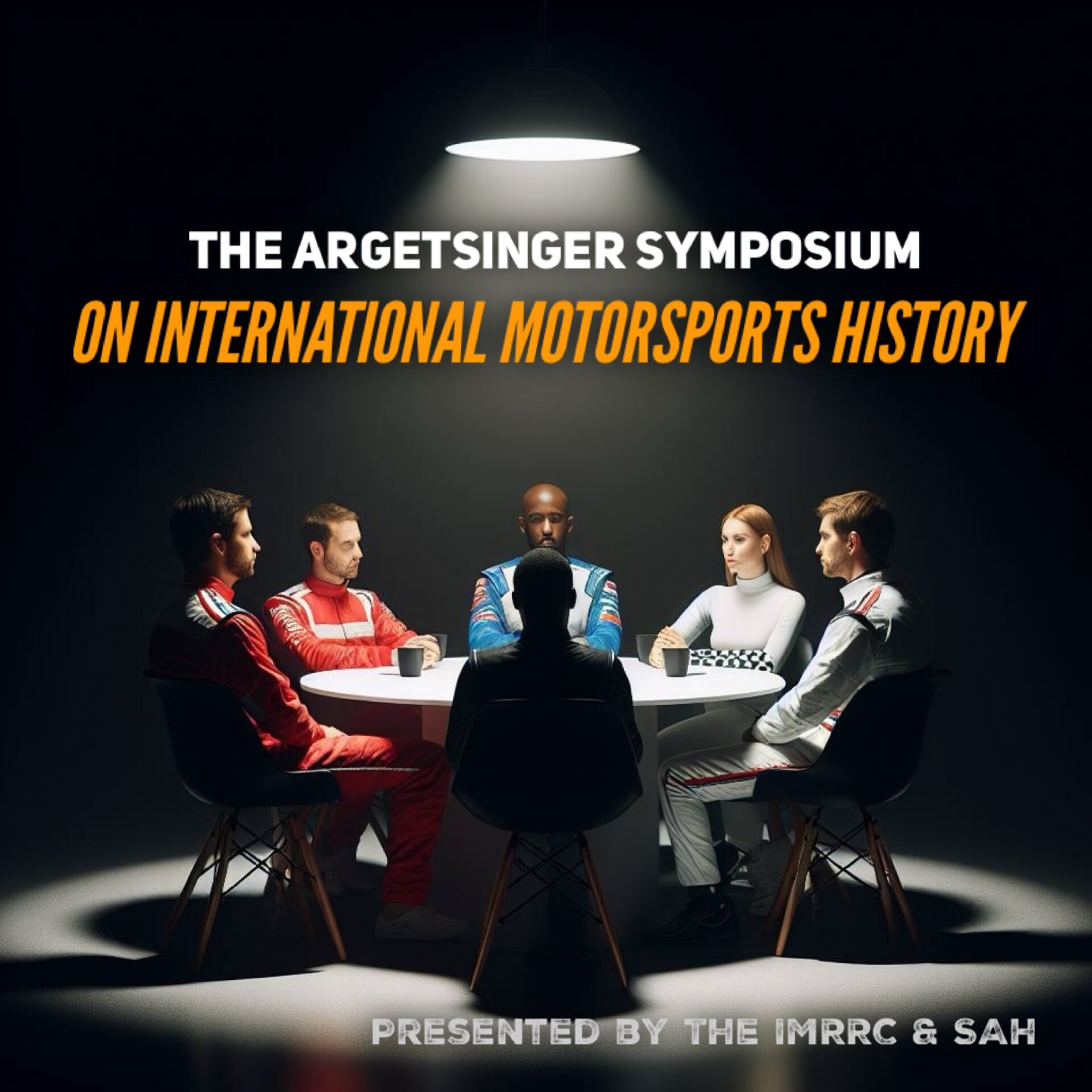 The International Motor Racing Research Center (IMRRC), partnering with the Society of Automotive Historians (SAH), presents the annual Michael R. Argetsinger Symposium on International Motor Racing History. The Symposium established itself as a unique and respected scholarly forum and has gained a growing audience of students and enthusiasts. It provides an opportunity for scholars, researchers and writers to present their work related to the history of automotive competition and the cultural impact of motor racing. Papers are presented by faculty members, graduate students and independent researchers.The history of international automotive competition falls within several realms, all of which are welcomed as topics for presentations, including, but not limited to: sports history, cultural studies, public history, political history, the history of technology, sports geography and gender studies, as well as archival studies.
The International Motor Racing Research Center (IMRRC), partnering with the Society of Automotive Historians (SAH), presents the annual Michael R. Argetsinger Symposium on International Motor Racing History. The Symposium established itself as a unique and respected scholarly forum and has gained a growing audience of students and enthusiasts. It provides an opportunity for scholars, researchers and writers to present their work related to the history of automotive competition and the cultural impact of motor racing. Papers are presented by faculty members, graduate students and independent researchers.The history of international automotive competition falls within several realms, all of which are welcomed as topics for presentations, including, but not limited to: sports history, cultural studies, public history, political history, the history of technology, sports geography and gender studies, as well as archival studies.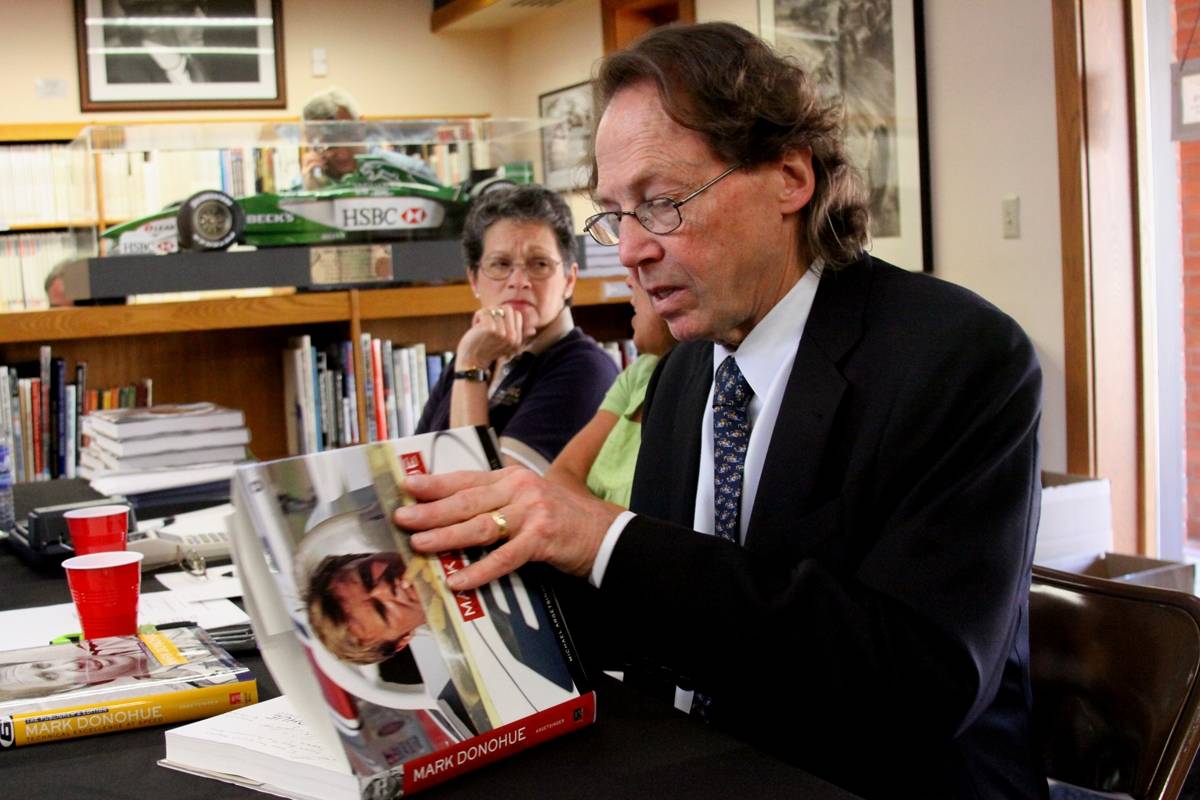 The symposium is named in honor of Michael R. Argetsinger (1944-2015), an award-winning motorsports author and longtime member of the Center's Governing Council. Michael's work on motorsports includes:
The symposium is named in honor of Michael R. Argetsinger (1944-2015), an award-winning motorsports author and longtime member of the Center's Governing Council. Michael's work on motorsports includes:- Walt Hansgen: His Life and the History of Post-war American Road Racing (2006)
- Mark Donohue: Technical Excellence at Speed (2009)
- Formula One at Watkins Glen: 20 Years of the United States Grand Prix, 1961-1980 (2011)
- An American Racer: Bobby Marshman and the Indianapolis 500 (2019)



